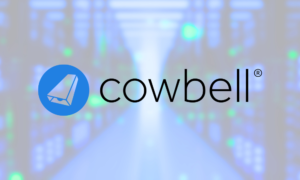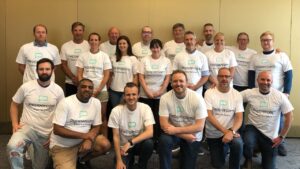The old adage, “If you build it, they will come,” is no longer accurate when it comes to winning over customers.
In today’s digital economy, customers expect better and personalized products, round-the-clock services, and frictionless online and offline experiences.Given ever-mounting customer expectations, how can enterprises attract and retain their customers?
As the shift towards digitization accelerates amid the COVID-19 pandemic, the pursuit of solutions for tailored, seamless customer experiences can empower enterprises to bring in new customers and build loyalty. But this pursuit can be particularly tricky for industries like banking and insurance, where legacy players have traditionally been laggards in adopting new technologies.
To keep up, large enterprises must be not only be able to offer their customers seamless digital workflows, but they must gain full visibility into how their customers interact with these interfaces. Understanding customer behavior and activity is key to satisfaction and retention.
Here are some of the concrete ways that enterprises are already optimizing their digital customer journeys and how other organizations can harness innovation to do the same.
What the Next Generation of Customer Experience Should Look Like
The key attribute of a successful digital journey is a user experience that gives customers the means to achieve their goals independently in real-time, with minimal delays and little to no interaction with a support agent.
As processes in every corner of daily life digitize with greater speed, some customer experiences that were widely acceptable in the past simply won’t cut it these days. Steps that used to be the norm—the need to dial in and wait on a phone line to make appointments or submit insurance claims; the need to print out forms, fill them out by hand, and re-scan or fax them back to a given service provider; the need for both banks and their customers to each store their own analog file of relevant papers or financial materials —are now having a negative effect on overall customer satisfaction levels.
Customers also increasingly expect complete transparency, with real-time visibility into the status of claims or applications at any given moment in time.
But where should enterprises begin the customer experience innovation process?
Start Simple: Go Paperless
Nobody likes paperwork, and a good first step is removing manual, paper, or call-based processes from the equation.
To maintain high levels of satisfaction, it is imperative to move quickly, try out new technologies and approaches, and innovate on an ongoing basis. Of course, that is easier said than done. Even if the ultimate goal is to radically redesign customer journeys from start to finish, simple first steps like going paperless and converting backlogged data into PDF or digital storage files will make every succeeding step simpler.
No-Code Tools
There’s a reason why no-code tools have already been called the most disruptive trend of 2021, and they’re just as applicable to the customer experience as they are to any of their other use cases.
By adopting no-code tools—software development platforms that allow non-programmers to create high-level applications without writing a single line of code—any technically astute employee, regardless of their coding ability, can create valuable customer-facing processes with point and click interfaces. By equipping non-coding employees to create these processes, no-code tools can help deliver improved digital experiences without the need for expensive new IT hires or an overload of resources.
Arguably the most attractive quality of no-code tools is the accelerated time to market for new digital applications and products compared with traditional development projects. The ability to adapt as quickly as customer needs and expectations are changing is key, and no-code tools allow enterprises to meet these needs with newfound speed and ease.
Headless Tech: No Guillotine Needed
The growing trend of headless tech goes hand in hand with no-code tools for developing user-optimized interfaces.
When a customer clicks “order now” on a new set of pajamas, the screen in front of them is very different from the screen at the pajama warehouse where their order appears. Headless tech is essentially just that: the idea that customer-facing and business-facing interfaces should communicate with the same information, while still being uniquely optimized for their respective tasks—a front-end designed for consumer presentation, a back-end designed for data functionality.
Particularly in legacy industries like banking or insurance—where back-ends are often mired with outdated legacy technologies that are incompatible with the sleek front-end experiences that customers expect—headless tech will prove to be an indispensable tool for companies looking to create custom digital experiences.
In the near future, we can expect to see banks, insurers and countless other enterprises increasingly implementing customer-facing front-end and back-end internal processes that remain separate from one another while still ensuring that data flows freely between the two.
Takeaways
The word “digitization” gets thrown around a lot these days. While some buzzwords mean more on paper than they do in practice, that isn’t the case when it comes to digitization in customer experiences. Consumers’ escalating standards create an imperative for enterprises to eliminate speedbumps along the digital journey, lest they take their business elsewhere in search of a better experience.
By identifying the issues with their customer service processes, taking steps towards going paperless, embracing no-code tools and adopting a headless tech approach to operations with unique front and back ends, enterprises will take the loyal users who rely on their services with them as they step into a new generation of customer experiences.
Source: Insurance Innovation Reporter








